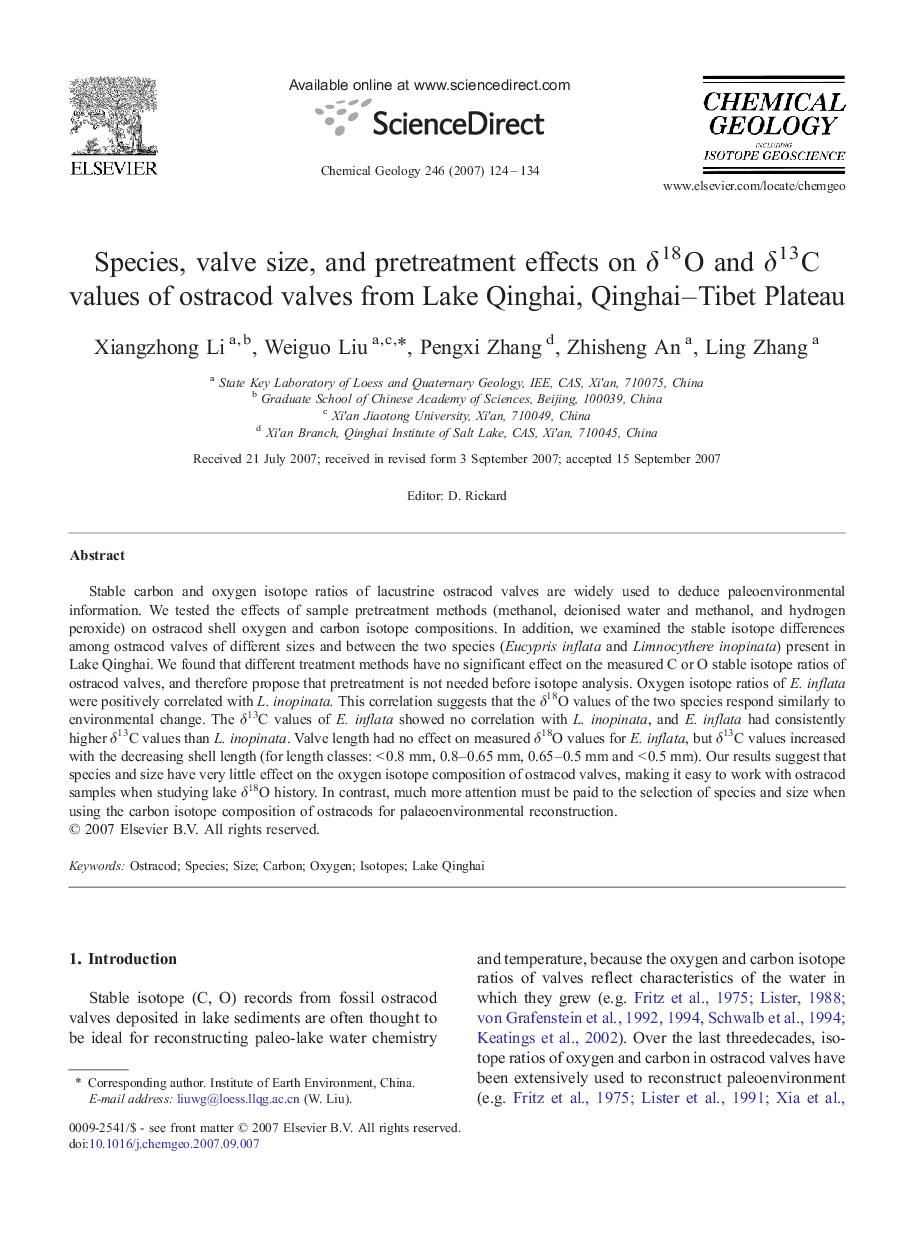| Article ID | Journal | Published Year | Pages | File Type |
|---|---|---|---|---|
| 4700730 | Chemical Geology | 2007 | 11 Pages |
Stable carbon and oxygen isotope ratios of lacustrine ostracod valves are widely used to deduce paleoenvironmental information. We tested the effects of sample pretreatment methods (methanol, deionised water and methanol, and hydrogen peroxide) on ostracod shell oxygen and carbon isotope compositions. In addition, we examined the stable isotope differences among ostracod valves of different sizes and between the two species (Eucypris inflata and Limnocythere inopinata) present in Lake Qinghai. We found that different treatment methods have no significant effect on the measured C or O stable isotope ratios of ostracod valves, and therefore propose that pretreatment is not needed before isotope analysis. Oxygen isotope ratios of E. inflata were positively correlated with L. inopinata. This correlation suggests that the δ18O values of the two species respond similarly to environmental change. The δ13C values of E. inflata showed no correlation with L. inopinata, and E. inflata had consistently higher δ13C values than L. inopinata. Valve length had no effect on measured δ18O values for E. inflata, but δ13C values increased with the decreasing shell length (for length classes: < 0.8 mm, 0.8–0.65 mm, 0.65–0.5 mm and < 0.5 mm). Our results suggest that species and size have very little effect on the oxygen isotope composition of ostracod valves, making it easy to work with ostracod samples when studying lake δ18O history. In contrast, much more attention must be paid to the selection of species and size when using the carbon isotope composition of ostracods for palaeoenvironmental reconstruction.
